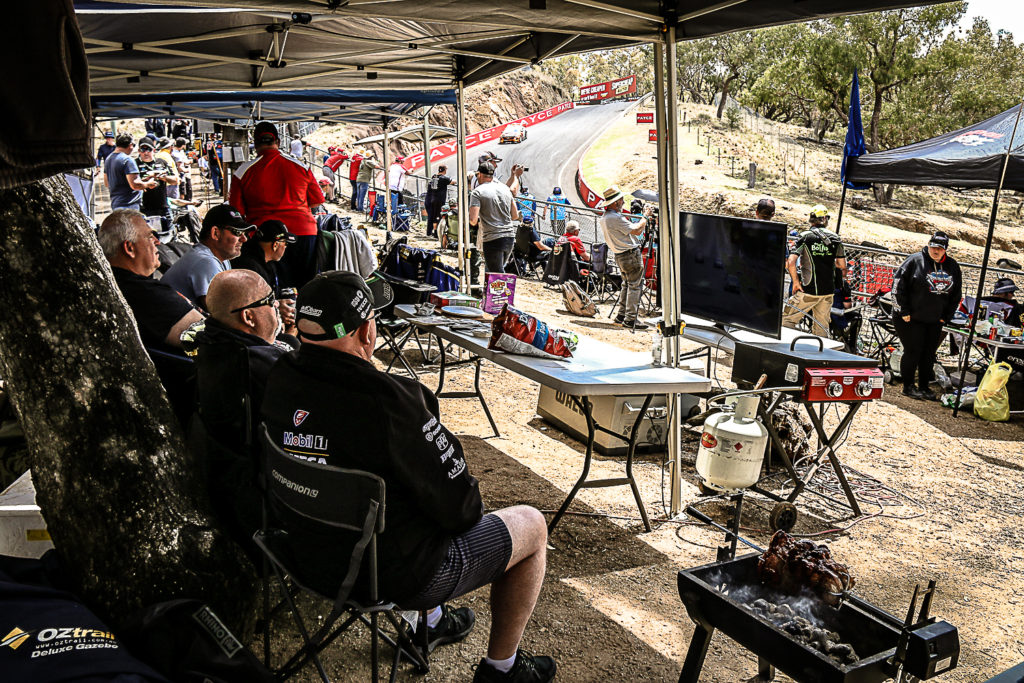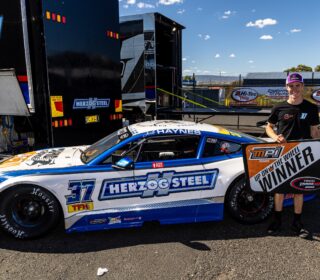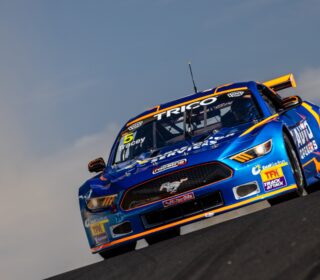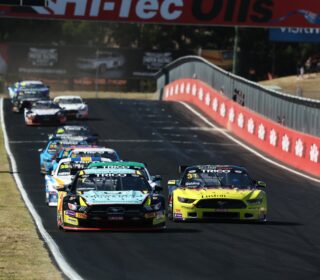RACING & THE CHANGING TIDE OF MEDIA RIGHTS

IF THE rise of virtual racing in the last three months has proved anything, it is that motorsport fans are more willing to consume their sport in a multitude of ways – including via non-traditional mediums – than ever before.
WORDS: Richard Craill LEAD IMAGE: Mark Walker
Internet streaming of car racing has been a thing for more than a decade but to this point hasn’t played anything more than a side part in major negotiations for TV rights agreements for the leading Motorsports categories around the world.
While Formula 1, Supercars, NASCAR, IndyCar and the WRC all sell ‘digital rights’ to their products, broadly speaking the main money still comes from more traditional ‘linear’ broadcast rights agreements for free-to-air or cable / subscription services.
The big question is, how long will this last?
The answer is, probably not very long.
With the Covid-19 pandemic forcing the shutdown of all major sports, organisations have been delving into their archives to produce content for their fans to consume, in effect giving them a chance to feel out ways that their fans may be willing to consume sport live in the future.
Supercars, Formula 1, FIFA and the National Football League are among many major sports to have dipped into their deep repository of archive vision to keep the views coming over the last few months – and it’s something that online video platforms, including YouTube, expect to see more of in the future.
“We have seen an increase in the use of a live platform by sports organisations and who knows where that will take us?” YouTube’s European Head of Sport Tomos Grace told sports news website, Sportcal.
“We would like to do a lot more live partnerships with sports organisations, broadcasters, leagues and clubs. We do a lot now but we would like to do more. There are a number of different examples of partners who are doing the full-length archive games and then a number of different ways that you can present it, and there is a lot of innovation in that area as well and there is definitely significantly more interest in that kind of content.
“The viewership numbers that we are seeing are much higher. The number of opportunities to watch it is also significantly greater and much broader than it used to be. It is not just soccer, it is also rugby and tennis. Broadcasters are doing it, so are the IOC and Fifa. It is a rich offer and the viewership is obviously higher.”
The benefit of broadcasting sport digitally stretches beyond the ability to generate eyeballs in more diverse ways and in more places – innovation is flowing in the area as well which will completely change the way sport is consumed by the paying public.

More screens, more info, more options and more choice are becoming the expectation from key swathes of viewers around the world, placing pressure on traditional mediums to keep up with the multiutde of options the digital world offers.
“The next generation not only expects the product to confirm to their schedule, they want to mold the product to conform to what it is they want to consume,” NBA commissioner Adam Silver told sports industry website fastcompany.com, in a recent piece analysing new software backed by Los Angeles Clippers owner and former Microsoft CEO, Steve Ballmer.
Company Second Spectrum, which lists Ballmer as a shareholder, has created a program that adds deep-level and interactive analysis to NBA contests – in broad terms giving fans using the technology, or broadcasters who sign up for it, an entirely new level of information with which to consume the game and everything around it. It happens instantly, at the touch of a button, and is scalable for mobile devices, broadcasts, in-stadium use and more.
That tech is not unique: The NBA itself recently signed a new partnership with Microsoft itself to create its own new digital platform that will allow for fans to personalize their own viewing experience.
“There’s not much more juice to squeeze from that orange,” Second Spectrum CEO Rajiv Maheswaran told the same fastcompany.com feature, regarding current NBA broadcasters Turner and ESPN and their current, linear broadcasts.
He says the way fans have consumed one of America’s largest sports for years is rapidly changing.
“Once you have the ability to touch the screen and find out stuff-who’s that guy? How’s he doing? You won’t want to watch sports any other way.”
Rajiv makes a valid point and Supercars’ recent success with their own Eseries competition backs it up; fans have gone from purely watching the traditional, linear broadcast to adding several feeds from streaming site Twitch to their computers or phones, while also filling social media with their own commentary.
It’s got to the point where, for example, Scott McLaughlin has publicly considered using Twitch when racing returns for real, though current broadcast rights would prohibit a live stream from his cockpit and of his team radio as has occurred during the Eseries.
This is how you race for the lead.. good times, well done SVG! https://t.co/9ILqQjPKOB pic.twitter.com/OzXfcrLsi8
— Scott McLaughlin (@smclaughlin93) May 27, 2020
Still, our own estimate suggest that Twitch alone has added more than 50% to the Supercars ESeries TV audience.
Broadly speaking, Supercars own streaming efforts via Twitch, Facebook and YouTube have seen enormous numbers that validate the democracy of internet broadcasting, especially compared to a more linear platform and especially one behind a paywall.
Monetising the product will be the next challenge, given that outside of Fox Sports the ESeries was provided free of charge. In the real-world it’s unlikely that would be a viable business model, even if it was supported by sponsors so it is likely that any future digital rights would remain behind a paywall.
What is apparent, however, is that the tipping point between a major sports organisation doing a deal with a digital-only broadcaster over a traditional one is not far away and the growing number of people willing to pay for Netflix, Stan, Amazon Prime or Foxtel’s new offering, Binge, is proof.
Supercars are in the process of negotiating their next TV deal as you read this story. At this point it looks likely that, as with the current deal, the immediate future of the series’ broadcasting arrangements will remain tied to Subscription broadcaster Fox Sports, and their increasingly important streaming affiliate, Kayo Sports, with support from a free-to-air broadcaster to show key events.
But in the fast-moving world of sports broadcasting, it’s there’s a better than average chance that it will be the last with a focus on the linear broadcast model. The interesting thing to track will be whether at the end of the next Supercars deal, the numbers on Kayo override those on Fox Sports.
If they do, or if they even come close, you can bet that the likes of YouTube, Amazon, Facebook and more may well come knocking when the next set of rights comes up for grabs: meaning the next four or five years may be key to completely changing the way we consume our favourite motorsport for years to come.
Elements of this story first appeared on TalkMotorsport.co.nz – New Zealand’s top source for motorsport news and opinion. It’s a great site with lots of good content – do check it out!







